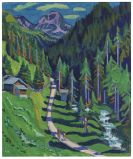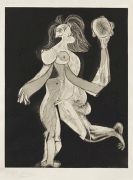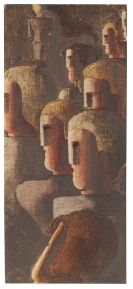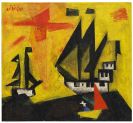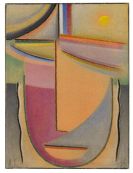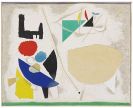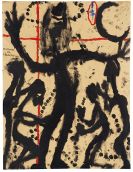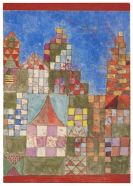
Albert Ferenz
Groß-Hoschütz
1907 -
München
1994
Albert Ferenz was born in Groß Hoschütz near Troppau in 1907. Even before beginning school, his parents recognized his artistic talent and encouraged his artistic endeavors. He attended the Volkschule in his hometown and later went to the German "Bürgerschule". In the years from 1921 until 1930, he decided on an apprenticeship in decoration painting, which he intended to lead the way into studying art. His painter master Raimund Alt placed special emphasis on his education in the technique of stenciling and ornamental sculpture painting.
Albert Ferenz passed his trade exams in 1926 and subsequently went to the industrial art school in Breslau. Professor Gebhard Uttinger was the director of the department of ecclesiastical art at the time, and he established a lifelong friendship with Professor Ludwig Peter Kowalski, director of studies. Ferenz' desire to study under Otto Müller, the Expressionist painter, remained unfulfilled as the latter died unexpectedly. He continued his studies from 1931 until 1936 at the Academy of Visual Arts in Vienna. Here, Albert Ferenz received instruction from various notable professors: Hans Larwin in general painting, Robert Eigenberger in restoration, and finally Hans Martin in engraving techniques. Moreover in his freetime, Ferenz took lessons in fresco restoration techniques from the respected fresco painter Eduard Kling from Babitz.
From 1936 to 1942, he lived and worked as an artist in Troppau. During this time, he worked on canvas, linocuts, woodcuts, copper engraving, and dry point process using his themes in landscapes, still lifes, and figurations. He also completed many important restorations of frescoes by such artists as Josef Matthias Lassler and Franz Anton Sebasini. He was also commissioned to finish the restoration in the Jesuit church in Troppau and to expose the sgraffiti in the castle of the prince of Liechtenstein in Ullersdorf.
Albert Ferenz participated in community exhibits in his hometown and also presented his works in Berlin, Breslau, Dresden, Gleiwitz, Liegnitz, Ratibor, Reichenberg, and Toppau. He was drafted into military service from 1942 until 1945 and ended up as a prisoner of war of the Russians. After returning to Austria, he was not allowed to stay in his hometown. In this time after the war, Ferenz earned his living working as a farmhand. He was also able to establish himself in Vienna, working for Karl Wagner, the director of the State Institution for Restoration in Graz, and performed restoration work on paintings in the "Alte Galerie" of the Landesmuseum Joanneum, also in Graz.
In 1948, Albert Ferenz finally gained a foothold in the metropolis on the Danube. He was a versatile artist, using many different techniques and materials to express his vision. His early works, which included about 300 paintings and 2000 pages of drawings, were lost with his studio in Troppau during the war.
After 1945, the elements of New-Impressionism, Expressionism, Cubism, and Constructivism can be seen, which Ferenz brought into his own synthesis in his works. Exhibiting all over Europe and oversees, his works found much recognition. Albert Ferenz received many awards, including the Culture Prize of Upper Silesia in 1980.
The artist died in March 1994 in Munich.
Would you like to sell a work by Albert Ferenz?
Infos for seller
